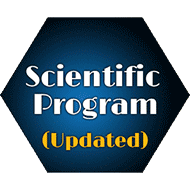
Lajos Lakatos
Pediatrician-in-Chief, County Hospital, Hungary
Title: Metal Mediated Bilirubin Encephalopathy: Treatment with D-Penicillamine
Biography
Biography: Lajos Lakatos
Abstract
Very wide-ranging studies have long been made on the possible biochemical transformations of unconjugated bilirubin (UCB) which is formed during the decomposition of haemoglobin. Particular attention has been paid to its photochemical and redox reactions but the relevant publications comprise only a very small proportion of those dealing with the molecular biochemistry of UCB and metal interactions. Bilirubin has a special affinity for the basal ganglia (BG) because they are also target brain regions for divalent metal (Cu, Fe, Zn et cet.) accumulation. The immature and strikingly vulnerable neurons play important role in the pathogenesis of bilirubin induced neurological dysfunction (BIND). Following the developmental period, neurons mature and restrict the apoptotic pathway to permit long-term survival.
On the basis of abundant research data and hypotheses, according to our concept, the BIND is a neurodegenerative disease of immature brain caused by accumulation of free metals and UCB-Cu complex (as prooxidant) in the BG and other parts of CNS relevant to BIND. During pregnancy the estrogen levels rise, greatly increasing the retention of copper in the body. This metal will pass through the placenta into the unborn child. So many children are being born with toxic levels of copper and other heavy metals which were stored in the mother’s body. The main comorbidity is the hemolysis. During this process a great amount of heavy metals may circulate in free form in the bloodstream, and can pass through the blood brain barrier, finding entrance into the CNS as well.

